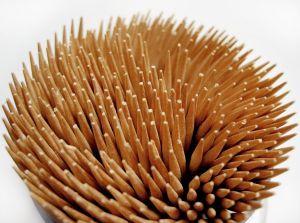Gardeners or even a child can start an avocado plant from seed – even start one in water. Three toothpick points are partially jabbed equi-distance apart in a circle about half an inch above the seed bottom. The seed is then placed in a glass of water so the bottom is immersed about a half an inch into the water.
The toothpicks (over the glass edge) hold up the avocado seed. Then, set the glass on a window sill, preferably with a northern exposure. The seed eventually cracks and sprouts roots. It is of horticultural interest to observe the seeds as they develop, particularly for children as a beginning interest in gardening or to pursue horticultural studies. We wouldn’t recommend growing such an avocado seedling tree because 90 per cent of the time the eventual seedling fruit is likely to be of poor quality or barely any meat but large seed or meager amount of meat and thick skin.
Gardener is wise to purchase a budded avocado tree and particularly a variety that tolerates local weather conditions. Most nurserymen will know which variety grows best near the coast or inland. Fruit trees of any kind should not be planted in a lawn but in an open area where the watering can completely be controlled. Macadamia nut trees may be planted in a lawn provided they get thorough watering but it too must be a budded variety for a successful crop of good fruit.
Avocado trees should not be watered more than two feet deep according to a friend who had an avocado grove. He was instructed by one of the avocado growers associations he belonged to, that the avocado trees should not be watered more than two feet deep but must be watered thusly way out to the drip line of the trees. Constantly kept moist soil plus possible poor drainage where the bottom of the roots stand in water, eventually invites a bacterial root disease and tree dies.
One of the methods to save on frequency of lawn watering is to water the lawn to about a six-inch depth, preferably in the morning. The most direct way to know the depth penetration of water in the lawn is to use an battery-powered moisture meter. Next would be to water the lawn for 10 minutes – unless it is on a slope and the water would run off. A quarter to half an hour later dig out an inch square plug of lawn about three to four inches deep. Look at the moisture penetration. Knowing it took 10 minutes for x-inch or inches of water to soak down, figure out the rest of the time it needs to soak the lawn to about six inches deep. Replace the lawn plug and water it. Lawn on slope has to be watered in installment periods to add up to the needed amount. Thereafter, gardener knows how long it takes to water the lawn.
It’s a known fact that higher mowing of dichondra or blade grass, excepting hybrid Bermuda, devil grass and St. Augustine, during the summer season helps somewhat to save on frequency of watering. Just as important too, higher mowing tends to retard weeds. It is recommended that dichondra lawns be mowed to about one and a half inches high. The mixed blade grasses are mowed to about two and a half inches in height. Lawn feeding should be done after the lawn has had its maximum drink of water, but the leafage must be dry. Fertilizer should be hosed off the leaves into the lawn, then watered well by a sprinkler system, or a set hose sprinkler.
http://en.wikipedia.org/wiki/Avocado







